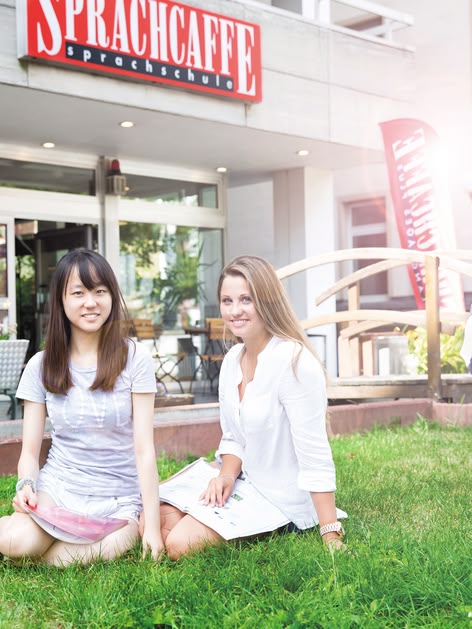The Global Language Travel Market: On the Brink of an Explosion? Trends, Challenges, and Forecasts
Language Travel: Definition and Market Overview
The language travel market is a rapidly developing segment of international education, focusing on learning foreign languages in their native environment. It's more than just a course; it's a comprehensive cultural experience combined with numerous social engagements.
What exactly is Language Travel?
Language Travel is a variety of organized programs that combine intensive language learning with immersive cultural experiences in the given country. They include:
- Intensive language courses for adults
- Immersive camps for younger students
- Specialized business training for adults
- Programs directed and adjusted for seniors
- Combining learning with activities/hobbies (e.g., language learning + yoga, cooking, volunteering)
This ecosystem comprises a diverse range of participants involved in international education and student exchange programs. It includes students from all around the world who are seeking educational opportunities abroad. Additionally, it features accredited language schools located in foreign countries that provide language courses and cultural immersion experiences. Specialized educational agencies also play a crucial role by facilitating student placements, arranging programs, and providing support services. Moreover, accommodation providers, such as host families, offer students a home-like environment to enhance their cultural experience and language practice during their stay abroad.
The Most Popular Destinations for English Language Learners

When students decide to embark on a language learning journey abroad, their choice of destination is often influenced by a country's reputation for educational excellence, cultural heritage, and lifestyle. While the global landscape of language travel is becoming more diverse, a few key countries consistently remain at the top of the list for those seeking to master English.
United Kingdom
As the birthplace of the English language, the UK remains a top choice for students seeking a classic and culturally rich learning experience. Cities like London, Brighton, Cambridge, and Oxford offer world-renowned language schools and a vibrant, historical environment that makes learning a part of daily life.

United States
The US appeals to students with its diverse geography, innovative teaching methods, and opportunities to explore various cultures, from the fast-paced life of New York City to the relaxed atmosphere of California.The vastness of the country provides a huge range of experiences, from bustling urban centers to laid-back coastal towns, catering to every student's preference.
Canada
Known for its welcoming multicultural environment and high-quality education system, Canada, particularly cities like Vancouver and Toronto, is a popular choice for those looking for a safe and friendly learning setting. Its strong focus on student well-being and a stunning natural landscape also make it a very attractive option.

Australia
Students are drawn to Australia for its unique natural beauty, laid-back lifestyle, and excellent schools. It is an ideal destination for those who wish to combine their studies with outdoor activities like surfing and exploring the Outback, creating a memorable and balanced experience.Ireland
Ireland is gaining significant traction due to its friendly atmosphere, rich history, and the advantage of being an English-speaking country within the European Union, which simplifies travel and visa processes for many international students. Its smaller size and tight-knit communities offer a more intimate and personal learning environment.
Size and Value of the Global Language Market
After a turbulent pandemic period, the language travel market is experiencing a strong rebound and stable, dynamic growth.
- Global Value: The global language learning market (including language travel) is predicted to have reached approximately $61.5 billion in 2023.1
- Growth Forecast: Forecasts indicate an unprecedented growth with a Compound Annual Growth Rate (CAGR) of over 20% from 2024 to 2032. This means the market value could increase several times over in the next decade.1
- Broader Context: The language services market as a whole (including translation and interpretation) was valued at $75.5 billion in 2024 and is projected to grow to $111.3 billion by 2033. These figures demonstrate the growing global demand for language proficiency. 2
Market Segmentation and Demand Drivers: Who Travels and Why?
The market is divided into several essential segments that shape the educational offerings:
1. By Language:
- English Dominance: English remains the undisputed leader, accounting for the vast majority of language travel due to its status as the global language of business, science, and culture.
- Growing Importance of Other Languages: Other languages such as Spanish, Mandarin, German, and French are gaining increasing interest.
This is driven by the growing economic power of their respective regions and a desire for deeper cultural immersion.
2. By Participant Age:
- Youth (under 18): This segment includes summer camps, holiday programs, and school exchanges. Safety, supervision, and a rich recreational program are key for them.
- Students (18-25): Primarily individuals seeking intensive courses, preparing for international exams (e.g., IELTS, TOEFL, Cambridge), or planning to study abroad. Their motivations are often academic and career-focused.
- Adults/Professionals (over 25): This segment chooses business, specialized (e.g., medical, legal language), or senior programs. Motivation can be focused on career development or hobbies.
Demand Drivers: Why do people want to learn abroad?
A range of global and individual factors shapes the demand for language travel:
- Globalization and Labor Market Requirements: The increasing trend of international cooperation and the mobility of the workforce across borders are driving a higher demand for employees who are bilingual or multilingual. In today's interconnected world, language skills are no longer just an added advantage but have become a fundamental requirement for participating effectively in the global job market. This necessity arises because effective communication across different languages enables businesses to expand their reach, foster international partnerships, and operate seamlessly across diverse cultural contexts.
- Culture and Personal Development: Increasingly, people view learning a language abroad as an opportunity for genuine cultural immersion. The desire to discover new places, understand local traditions, and broaden personal horizons is a powerful motivator.
- Educational Trends: Increasing awareness of the importance of foreign language learning from an early age, as well as the need for globally recognized language certificates and qualifications, drives demand.
- Influence of Social Media and Popular Culture: Social media platforms, TV series, movies, and music frequently serve as sources of inspiration for travel and language learning. They portray an appealing image of life abroad, highlighting the cultural richness and opportunities that come with mastering a new language. This exposure often sparks curiosity and motivation, encouraging individuals to explore new destinations and engage more deeply with different linguistic and cultural environments.
Key Market Trends: The Future Is Happening Now!
1. Post-Pandemic Recovery and a New Normal
The COVID-19 pandemic caused significant upheaval in the market, but now we're seeing a robust and energetic recovery in the sector. Students, craving genuine experiences and immersion, are increasingly returning to foreign educational institutions. Nevertheless, this "new normal" has led to some changes in their preferences.
- Instead of extended, year-long stays, they are increasingly opting for shorter, more intensive courses that enable quick progress and flexible scheduling.
- There is also a clear preference for closer destinations during the early stages of trying out language travelling.
Data confirms this trend:
- Spain recorded a 14.9% increase in student numbers in 2024, surpassing the 2019 levels.3
- Germany also shows a strong rebound in the outbound market, with a 15% increase in student numbers in 2024.4
- Asian markets (China, South Korea), are gradually regaining their position as key source markets, signaling further growth for English-speaking destinations. 5
2. Brexit's Impact: Ireland's Growing Advantage
Due to Brexit, the UK's departure from the European Union, the country has lost some potential in the language travel sector in favor of Ireland. With EU students no longer benefiting from the ease of travel turned their attention to Ireland. As an English-speaking country within the EU, Ireland provides a seamless experience for students from the continent, eliminating the need for complex visas and administrative hurdles. This shift has not only boosted Ireland's language travel industry but has also highlighted the importance of political and regulatory stability in shaping student flows. The simplicity of travel and the familiar EU framework have made Ireland an increasingly popular and practical choice for students who once would have instinctively chosen the UK.
3. Digitalization and Hybrid Models: The future of learning is flexible!
As digital transformation accelerates across all sectors, language education is also affected. Online platforms, which were once a last resort, now play a crucial role in providing services. We're observing the dynamic development of hybrid models, where part of the course takes place remotely and part in person. This provides students with unprecedented flexibility and the ability to continue learning regardless of their location.
It is not just about remote lessons. The industry is increasingly embracing advanced technologies:
- Artificial Intelligence (AI) personalizes learning paths, adapting materials to individual needs and pace.
- Virtual Reality (VR) and Augmented Reality (AR) offer immersive environments for language practice, simulating authentic communication situations. Imagine conducting virtual shopping in London or business negotiations in Berlin before you even arrive!
4. Personalization and Niche Offerings: Tailor-made experiences
Mass courses are slowly giving way to customized offerings. Students expect programs tailored to their specific needs and interests. There's a growing demand for specialized classes, e.g., English for doctors, lawyers, or engineers. Programs that combine learning with passions are also becoming increasingly popular, such as language and cooking, yoga, sports, art, or volunteering. This pursuit of unique and authentic experiences is becoming a strong driver for innovation in the offerings.
5. Growing Importance of Emerging Markets: New student sources
Traditional source markets, while stable, are being increasingly shared with new, dynamically developing regions. Countries like Vietnam and India, as well as those in Sub-Saharan Africa and North Africa (e.g., Morocco, Egypt), are becoming increasingly important sources of language students. Their young, ambitious populations, growing middle classes, and awareness of global opportunities are driving demand. This, in turn, leads to the diversification of destinations and the adaptation of offerings for these emerging markets, both culturally and economically.
Competitive Landscape and Challenges: What Stands in the Way of the Growth of Language Travel Markets?
The language travel market is a dynamic playing field where global brands and local specialists coexist. Understanding who dominates and what obstacles the industry faces is crucial for its future.
Key players and their role in the market
- Large Language School Chains: Global giants like Sprachcaffe, EF Education First, ESL, Kaplan International Languages lead the pack. They boast extensive infrastructure, recognizable brands, and a wide range of programs worldwide. Their strength lies in their reach and ability to serve a mass clientele.
- Local, Independent Schools: Alongside them, smaller, often family-run schools thrive. They typically specialize in niche programs, offering a more personalized approach and authentic experiences that appeal to students seeking something beyond a standard course.
- Educational agents play a crucial role, especially in Asian, Middle Eastern, and Latin American markets. Agents act as intermediaries, advisors, and points of contact for students, helping them choose programs, with recruitment and visa processes. Their local knowledge and network of contacts are invaluable for schools.
- Rise of Direct Online Recruitment: More schools are now developing their own marketing and recruitment platforms. Digitalization has made it easier for students to access information and apply directly for courses, decreasing dependence on agents. However, agents still play a crucial role, particularly in formal procedures and visa applications.
Market Challenges: Obstacles to Success
Despite optimistic forecasts, the language travel market faces several challenges that require a strategic approach:
- Visa Issues and Immigration Regulations: The complexity and variability of visa regulations in many destination countries continue to pose a significant barrier. Long waiting times, stringent requirements, and frequent changes in immigration policies can deter potential students.
A notable illustration of this dynamic can be seen in the wake of Brexit, where the increased difficulty of obtaining visas for the United Kingdom has contributed to a decline in student numbers from certain markets.
This shift has, in turn, opened doors for competitors. For example, Ireland has become an increasingly popular and practical alternative. The relative simplicity of travel within the EU framework offers a more appealing and stable option for many students who might have otherwise instinctively chosen the UK. This highlights how regulatory environments can directly influence student choices and reshape the competitive landscape of the language travel market.6
- Infrastructure and Capacity: In popular cities like London, Dublin, or Vancouver, the growing demand for language courses can lead to shortages in accommodation (especially with host families). High living costs and insufficient infrastructure can limit further development.
- Costs and Inflation: Rising living costs in many destinations, combined with inflation, make language travel more expensive. This can influence students' decisions, prompting them to choose shorter courses, cheaper cities, or even online learning in their home country.
- Competition from Online Learning: Although hybrid models are well-liked, top-tier online language learning platforms compete directly with traditional travel. Companies must consistently emphasize the distinct benefits of cultural immersion and genuine experiences, which cannot be entirely replicated in a virtual setting.
- Sustainable Development: Rising ecological awareness urges the industry to reduce its carbon footprint. Investing in sustainable transportation, eco-friendly accommodations, and local partnerships is essential to meet the demands of environmentally conscious students.
Future Outlook and Industry Successes: What's Next?
Despite current challenges, the future of the language travel market looks promising. Innovations and shifting consumer expectations will drive its growth, creating new opportunities.
Growth Forecasts: The Market is on the Rise
The language travel industry is experiencing steady and lively growth. Forecasts suggest that this upward trend will persist in the coming years, driven by global demand for language proficiency. The larger language learning market, including travel, is expected to grow at a compound annual growth rate (CAGR) of over 20% until 2032, indicating significant potential for expansion. Key factors driving this growth include ongoing globalization, increased mobility of students and workers, and a rising awareness of the advantages of bilingual and multilingual skills.
Technological Innovations: New Horizons of Learning
Technology will increasingly influence the future of language travel by integrating AI and VR. AI will customize learning programs by analyzing progress and providing tailored materials. VR and AR will create realistic simulations of daily situations, enabling students to practice language skills safely and immersively before and during trips. Additionally, schools will utilize data analysis and AI to create highly personalized learning plans tailored to each student's individual goals, learning preferences, and interests.
Case Studies: Inspiring Industry Success Stories
The industry is already providing examples of innovation and adaptation:
- Adaptation and Innovation: ILAC (International Language Academy of Canada). During the pandemic, ILAC quickly implemented the "ILAC KISS" model, offering high-quality online courses that it later seamlessly integrated into its in-person programs. This hybrid strategy enabled them to retain their student base and transition smoothly into the recovery phase, attracting students from diverse time zones and with varying needs.
- Niche Program Success: Malaca Instituto School in Spain gained popularity with its "Spanish & Culture for Seniors" offering. The program combines language learning with cultural activities, excursions, and recreational pursuits, perfectly meeting the needs and expectations of older students, creating a dedicated, thriving segment for them.
- Sustainable Development in Practice: EC English (Malta) Some schools, such as EC English, actively implement sustainable development initiatives, including reducing plastic consumption, promoting local products, and investing in eco-friendly buildings. Communicating these actions attracts students who prioritize environmental issues.
Summary and Recommendations: How to Leverage Market Potential?
The global language travel market is a remarkably resilient industry characterized by its dynamic growth trajectory and vast potential for future expansion. Following a particularly challenging period marked by the global pandemic, this sector is now steadily rebounding and returning to a robust growth path.
It is actively adapting to new realities, shifting expectations, and emerging trends within the industry. Success in this competitive landscape depends heavily on a comprehensive understanding of its various segments, the strategic leverage of cutting-edge technological innovations, and the ability to respond flexibly and proactively to the continuously evolving needs and preferences of students seeking language learning opportunities abroad.
Key Takeaways:
- Strong rebound and growth: The market is experiencing a solid recovery, marked by increasing student numbers and rising market value. Forecasts indicate over 20% CAGR until 2032!
- Technology as a catalyst: Digitalization, AI, and VR are the future of language learning, offering unprecedented flexibility and personalization.
- Evolving expectations: Students are seeking authentic, personalized, and sustainable experiences that extend beyond traditional courses.
The future of language travel appears promising, offering a unique blend of learning, culture, and self-development in a more interconnected world. The industry that adapts well to these changing demands is sure to succeed spectacularly!
References:
1 Global Market Insights (2024, June). Language Learning Market Size https://www.gminsights.com/industry-analysis/language-learning-market
2 IMARC (2024). Language Services Market Size, Share, Trends and Forecast by Service, Component, Application, and Region, 2025-2033 https://www.imarcgroup.com/language-services-market
3 Study Travel Magazine (2025, April 3). Spain's language schools set enrolment and student weeks records in 2024
https://studytravel.network/magazine/news/0/31315
4 ICEF Monitor (2025, April 24). Germany: Outbound language travel grew again in 2024
https://monitor.icef.com/2025/04/germany-outbound-language-travel-grew-again-in-2024/
5 ICEF Monitor (2024, February 7). Demand for study abroad rising in China but students considering more destinations in 2024
6 The Higher Education Policy Institute (HEPI) (2024, September 3). Reduced international student numbers are a much bigger problem than you think


